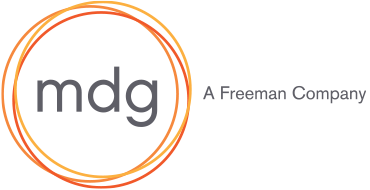
The light is shining brightly at the end of the COVID-19 tunnel. As organizers are planning a return to in-person events, they are grappling with the role that digital offerings will — or won’t — play in a post-pandemic future. Here are a few important considerations to help guide the decision-making process.
What is hybrid, exactly? Technically, it’s a single event that serves both in-person and virtual audiences. Throughout the pandemic, however, we’ve been encouraging organizers to expand the definition of hybrid to be more encompassing – and to consider the place that webinars, peer-to-peer roundtables, podcasts, e-books, infographics, video, community-management platforms, and other offerings (beyond content created at/broadcast from a live event) will have in a holistic engagement strategy. So, before planning a traditionally-defined hybrid future, think about how an omni-channel approach to content can meet the year-round needs of an audience and how your events (physical and/or online) fit into the mix.
What are the primary benefits of hybrid? Each organizer might answer this question a little differently, but really it’s the opportunity to combine the reach of virtual with the depth of in-person. Over the past year, we’ve seen digital events attracting brand new audiences – people who perhaps have always had an interest in our content but weren’t willing or able to travel to experience it live. As we return to in-person events, we must ask ourselves: how important is it to continue reaching and engaging these audiences? How important will it be to diversify revenue streams to protect against future disruptions? And finally, will hybrid help us better serve the needs of our exhibitors and sponsors, and if so, how?
Just how hybrid should I make my event? Hybrid isn’t an all-or-nothing proposition. If your physical trade show is heavily reliant on demonstrations, sensory buying or a face-to-face sales process, will it make sense to try and replicate it virtually? Maybe not, but maybe the educational component is perfectly suited for online consumption. It’s likely your internal resources – both budget and people – will factor significantly in the “how hybrid?” decision.
Does the online version of the event need to happen at the same time as the live version? Absolutely not. Scheduling the online and in-person experiences at the same time will increase expense and complexity without necessarily delivering what your online attendees crave. Instead, create FOMO from shared moments – like a novel discovery by an industry-leading expert, a discussion with the keynote speaker or a celebrity Q&A. Broadcasting “wow” moments will make the in-person audience feel that their world is much larger while prompting the remote audience to want to be in-person next time.
How much should I discount the online version of my event? It depends. We’re finding many of the events we promote aren’t offering any discount, especially those that are heavy on high-quality (in many cases, accredited) educational offerings. Align your pricing strategy with your value proposition, which brings us to our final point …
How do I promote the digital offering without cannibalizing physical attendance? It’s likely that prospects who have attended past in-person events and/or who are in close geographical proximity are those mostly likely to attend an in-person event. Those who are under travel restrictions, live internationally, have never attended a physical event and/or have consumed your digital content will be more likely to participate online. Start by segmenting your audience, as much as possible, into these two categories and promoting the corresponding offering to each group. Allow the unknowns to self-select and ensure that all communications allow for a prospect to learn about/register for the other experience. In your messaging, communicate distinct value propositions for each offering rather than suggesting that it’s one event that can be experienced in two ways. And don’t be afraid to shift toward a heavier emphasis on digital at the end of the event cycle – and beyond.
A version of this article originally appeared in PCMA Convene.


